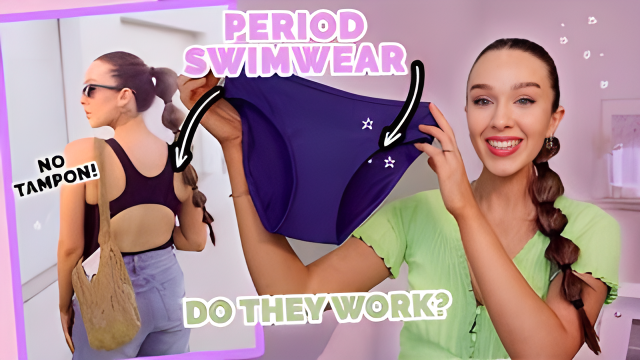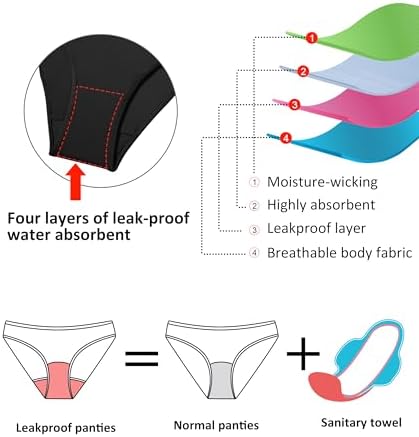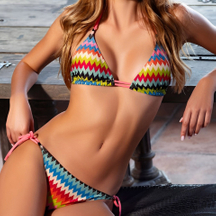Content Menu
● What Is Period Swimwear?
● How Does Period Swimwear Work?
● Materials Needed for Period Swimwear
● Step-by-Step: How to Make Period Swimwear
>> 1. Choose Your Design
>> 2. Pattern Preparation
>> 3. Cutting Fabrics
>> 4. Layer Assembly
>> 5. Sewing:
>> 6. Final Assembly
>> 7. Testing
● Key Design Considerations
● Manufacturing and OEM Opportunities
● Care and Maintenance of Period Swimwear
● Benefits of Using Period Swimwear
● Frequently Asked Questions
● Conclusion
● Citations:
How to Make Period Swimwear: A Complete Guide for Brands and DIY Enthusiasts
Period swimwear is transforming the way people experience water activities during menstruation. Whether you are a swimwear brand, a wholesaler, or a DIY sewing enthusiast, understanding how to make period swimwear is essential to meeting the growing demand for comfort, leak protection, and style. This comprehensive guide will walk you through the materials, construction, technology, and business opportunities behind period swimwear.

What Is Period Swimwear?
Period swimwear, also known as menstrual swimwear, is specially designed swimwear that allows people to swim confidently during their menstrual cycle. Unlike traditional swimsuits, period swimwear features built-in absorbent and leak-proof layers that capture menstrual flow and prevent leaks, both in and out of the water[11][14][16]. Modern period swimwear looks and feels like regular swimwear, ensuring discretion and comfort[4][12][15].
How Does Period Swimwear Work?
The secret to period swimwear lies in its multi-layered gusset (the crotch area). Here's how it typically works:
- Top Layer: Moisture-wicking fabric keeps the skin dry and comfortable.
- Middle Layer: Highly absorbent material locks in menstrual fluid, often absorbing the equivalent of 2–3 tampons[12][14][11].
- Bottom Layer: Waterproof or water-resistant fabric prevents leaks and stops pool or seawater from entering the absorbent layers[4][9][13].
This combination ensures that menstrual blood is absorbed and contained, while water from the pool or sea is repelled, allowing for worry-free swimming[11][16][17].
Materials Needed for Period Swimwear
Choosing the right materials is crucial when learning how to make period swimwear. The fabrics must balance absorbency, waterproofing, comfort, and durability:
- Outer Fabric: Usually a blend of nylon and spandex for stretch, quick-drying, and chlorine resistance[2][13][14].
- Absorbent Layer: Bamboo, organic cotton, microfiber, or specialty absorbent textiles for capturing menstrual fluid[3][11].
- Waterproof Layer: Polyurethane laminate (PUL) or similar breathable, waterproof material to prevent leaks[3][13].
- Wicking Layer: Athletic wicking jersey or polyester to draw moisture away from the skin[3][7].
- Elastic: Chlorine-resistant elastic for leg and waist openings to ensure a snug, leak-proof fit[2][1].
Example Material Breakdown:
| Layer | Material Example | Function |
| Outer | Nylon/Spandex | Stretch & durability |
| Absorbent | Bamboo/Cotton/Microfiber | Absorb menstrual fluid |
| Waterproof | PUL/TPU | Prevent leaks |
| Wicking | Polyester/Athletic Jersey | Keep skin dry |
Step-by-Step: How to Make Period Swimwear
1. Choose Your Design
Decide whether you want to make a one-piece swimsuit or a bikini. One-piece suits offer more coverage, while bikinis allow for mix-and-match options.
2. Pattern Preparation
- Start with a standard swimwear pattern or period underwear pattern. Adjust gusset size for more coverage if needed[1][7].
- Ensure the pattern accommodates the three-layer gusset construction.
3. Cutting Fabrics
- Cut the outer swimwear fabric for the body and gusset.
- Cut absorbent and waterproof layers for the gusset area only[1][3].
- Prepare elastic for leg and waist openings.
4. Layer Assembly
- Gusset Construction:
- Place the wicking layer on top, absorbent layer in the middle, and waterproof layer at the bottom.
- Ensure no stitches go through all three layers to prevent wicking leaks to the outside[1].
5. Sewing:
- Attach gusset layers together, securing only the edges.
- Sew gusset into the main swimwear body, ensuring a snug, flat finish.
- Use fold-over elastic (FOE) or swimwear elastic to finish leg and waist openings for a secure fit[1][2].
6. Final Assembly
- Attach all main body pieces, straps, and closures as per your swimwear design.
- Double-check seams for strength and leak-proofing.
- Finish with quality checks for fit, comfort, and appearance[2].
7. Testing
- Test the finished period swimwear for absorbency, leak-proofing, and fit before scaling up production or offering to customers[2][15].

Key Design Considerations
When learning how to make period swimwear, consider these important factors:
- Absorbency Level: Most period swimwear is suitable for light to moderate flow. For heavy flow, recommend using a menstrual cup or tampon for extra protection[4][14][17].
- Fit: A snug fit around the legs and waist is essential to prevent leaks. Use size guides and consider offering a range of sizes for inclusivity[12][14].
- Style: Offer both one-piece and bikini styles to cater to different preferences. Ensure the gusset is discreet and comfortable[4][15].
- Color and Print: Dark colors and prints help conceal stains and offer a fashionable look[2].
- Durability: Use chlorine-resistant, quick-drying, and anti-pilling fabrics for longevity[2][18].
Manufacturing and OEM Opportunities
If you are a swimwear brand, wholesaler, or OEM factory, understanding how to make period swimwear opens up significant business opportunities:
- Growing Market: The demand for period swimwear is rising globally, especially among teens, athletes, and eco-conscious consumers[15][12][18].
- OEM/ODM Services: Offer custom branding, designs, and packaging for overseas clients. Highlight your expertise in absorbent textiles and leak-proof construction[8].
- Quality Assurance: Emphasize rigorous quality control, fabric testing, and compliance with international standards[2].
- Eco-Friendly Options: Promote reusable, sustainable period swimwear as an alternative to disposable menstrual products[18].
Care and Maintenance of Period Swimwear
Proper care ensures longevity and effectiveness:
- Rinse: After use, rinse period swimwear in cold water to remove excess blood[11][10].
- Wash: Hand wash with mild soap or use a gentle machine cycle. Avoid fabric softeners and bleach, as they can damage absorbent and waterproof layers[10][11].
- Dry: Air dry flat or hang. Do not tumble dry on high heat[10][11][13].
- Storage: Store in a dry, ventilated area until next use.
Benefits of Using Period Swimwear
1. Comfort: Period swimwear is designed to be comfortable and stylish, allowing you to enjoy swimming without discomfort.
2. Convenience: You can swim without the need for additional menstrual products, making it easier to enjoy your time in the water.
3. Eco-Friendly: By using period swimwear, you reduce the need for disposable products, contributing to a more sustainable lifestyle.
Frequently Asked Questions
1. How to make period swimwear for heavy flow?
Use extra absorbent layers and consider combining period swimwear with a menstrual cup or tampon for heavy flow days[4][17].
2. Can period swimwear be worn alone?
Yes, on light to moderate flow days. For heavy days, use with internal protection for best results[4][10][14].
3. Will period swimwear absorb pool water?
No, the waterproof layer repels pool water and only absorbs menstrual fluid from the inside[10][13][14].
4. How long can you wear period swimwear?
Typically, period swimwear can be worn for several hours—up to the absorbency limit of 2–3 tampons' worth. Change after swimming or as needed[10][12][16].
5. How to wash period swimwear?
Rinse in cold water, hand wash or use a gentle machine cycle, and air dry. Avoid bleach and fabric softener[10][11][13].
6. Is period swimwear reusable?
Yes, with proper care, period swimwear can be reused for many cycles, making it eco-friendly and cost-effective[10][13][18].
7. Does period swimwear look different from regular swimwear?
No, modern period swimwear is designed to look and feel like regular swimwear, with discreet protection[4][12][15].
Conclusion
Making your own period swimwear can be a rewarding project that allows you to enjoy swimming during your period without worry. By following the steps outlined in this guide, you can create a comfortable and functional swimsuit tailored to your needs. Embrace the freedom of swimming on your period with confidence!
Citations:
[1] https://greenstyle.com/blogs/news/seaside-swim-bottoms-hack-to-period-panties
[2] https://www.ashleymcpherson.com/blog/the-complete-180-step-swimwear-manufacturing-process-from-a-global-sourcing-expert
[3] https://www.reddit.com/r/PeriodUnderwear/comments/12q0ho2/period_underwear_materials/
[4] https://theecowoman.com/collections/period-swimwear
[5] https://www.rubylove.com/collections/period-swimwear
[6] https://www.youtube.com/watch?v=fFRjDsdMfIg
[7] https://www.youtube.com/watch?v=B1hNKKV9YrY
[8] https://www.made-in-china.com/products-search/hot-china-products/Period_Swimsuit.html
[9] https://eu.modibodi.com/blogs/womens/all-your-questions-answered-about-period-swimwear
[10] https://www.beautikini.com/blogs/latest-news/10-q-a-to-deepen-your-understanding-of-beautikinis-period-swimwear
[11] https://flo.health/menstrual-cycle/lifestyle/fitness-and-exercise/period-swimwear
[12] https://www.knixteen.com/collections/period-proof-swim
[13] https://www.beautikini.com/pages/faq
[14] https://azurebelle.com.au/blogs/news/period-swimwear-for-beginners
[15] https://www.goodhousekeeping.com/clothing/g36801184/period-swimwear-bathing-suits/
[16] https://azurebelle.com.au/blogs/news/period-swimwear-faqs-all-you-need-to-know-in-one-place
[17] https://www.cheekypants.com/blog/the-complete-guide-to-swimming-on-your-period.html
[18] https://knicked.com.au/blogs/period-talk/do-period-swimsuits-actually-work-a-guide-to-menstrual-swimwear
[19] https://www.greenprophet.com/2025/03/the-best-period-swimwear-for-teens-how-to-make-your-own/
[20] https://www.reddit.com/r/Swimming/comments/161o3gz/period_underwear_with_swimsuit/
[21] https://www.youtube.com/watch?v=iOdUPrN5iTc
[22] https://knix.com/blogs/resources/how-does-period-swimwear-work
[23] https://knicked.com.au/collections/swimwear-periods
[24] https://period.co/products/the-bikini
[25] https://awwaperiodcare.com/en-us/blogs/period-underwear-blog/period-swimwear-q-a
[26] https://wukawear.com/blogs/periods-a-z/a-guide-to-period-swimwear
[27] https://www.ashleymcpherson.com/s/The-Ultimate-Swimwear-Production-Checklist_-180-Steps-from-Concept-to-Consumer.pdf
[28] https://www.target.com/s/period+swim
[29] https://www.campaignasia.com/video/would-you-dive-into-shark-infested-waters-with-period-swimwear-on/497877



































